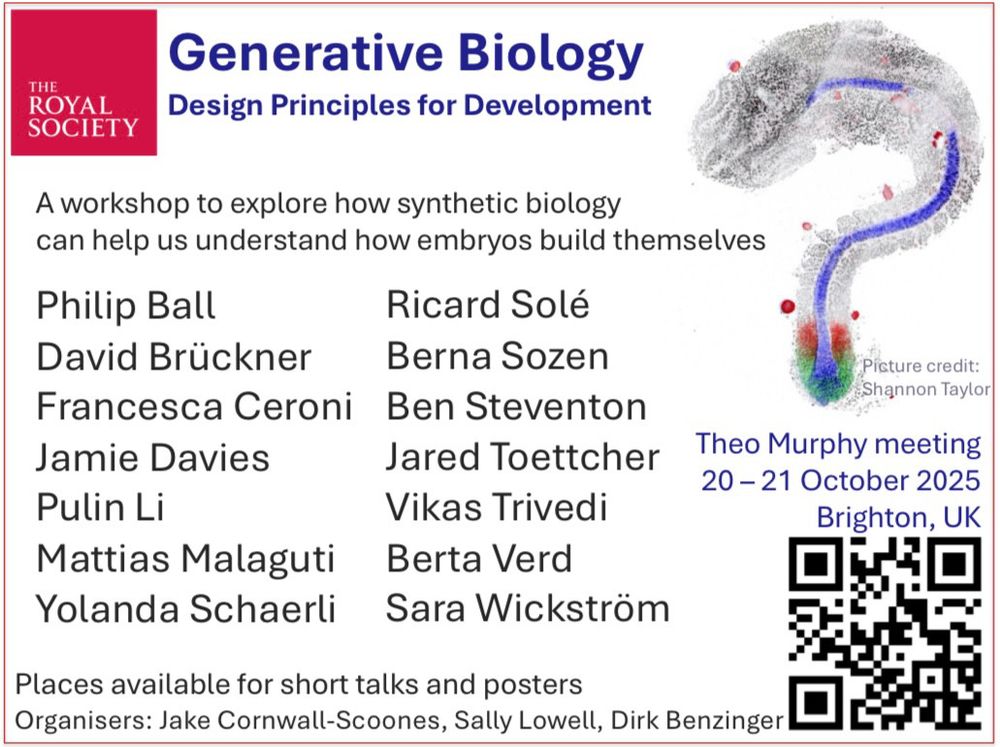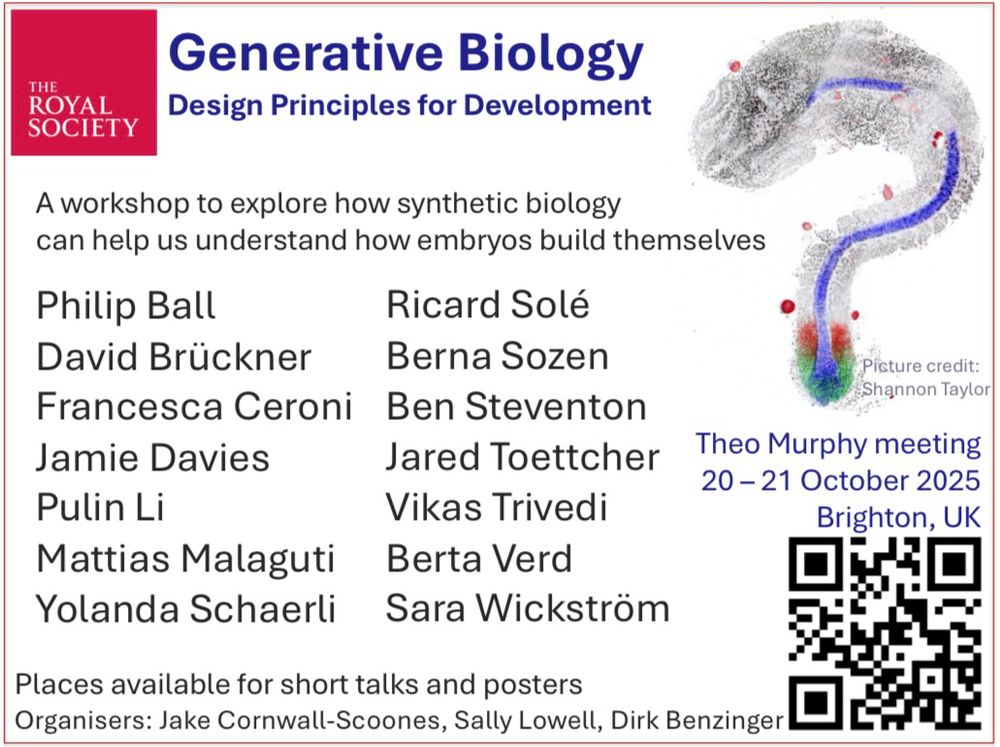
CDB UCL London and Gurdon Institute Cambridge
Wilson, Simons and Norden labs
Developmental, Systems and Synthetic Biology
Prev: Briscoe, Crick Institute; Zernicka-Goetz and Thomson, Caltech; Banerjee and Goehring, UCL
If this is a question that interests you, come and share your thoughts at this Royal Society Workshop on Generative Biology
royalsociety.org/science-even...

If this is a question that interests you, come and share your thoughts at this Royal Society Workshop on Generative Biology
royalsociety.org/science-even...


Thank you @jamesbriscoe.bsky.social. And my examiners @wbickmor.bsky.social @kabirhusain.bsky.social

Thank you @jamesbriscoe.bsky.social. And my examiners @wbickmor.bsky.social @kabirhusain.bsky.social
If this is a question that interests you, come and share your thoughts at this Royal Society Workshop on Generative Biology
www.royalsoc.ac.uk/science-even...

If this is a question that interests you, come and share your thoughts at this Royal Society Workshop on Generative Biology
www.royalsoc.ac.uk/science-even...
9/11

9/11
8/11

8/11
7/11

7/11
6/11

6/11
5/11

5/11
4/11

4/11
3/11

3/11
2/11

2/11

